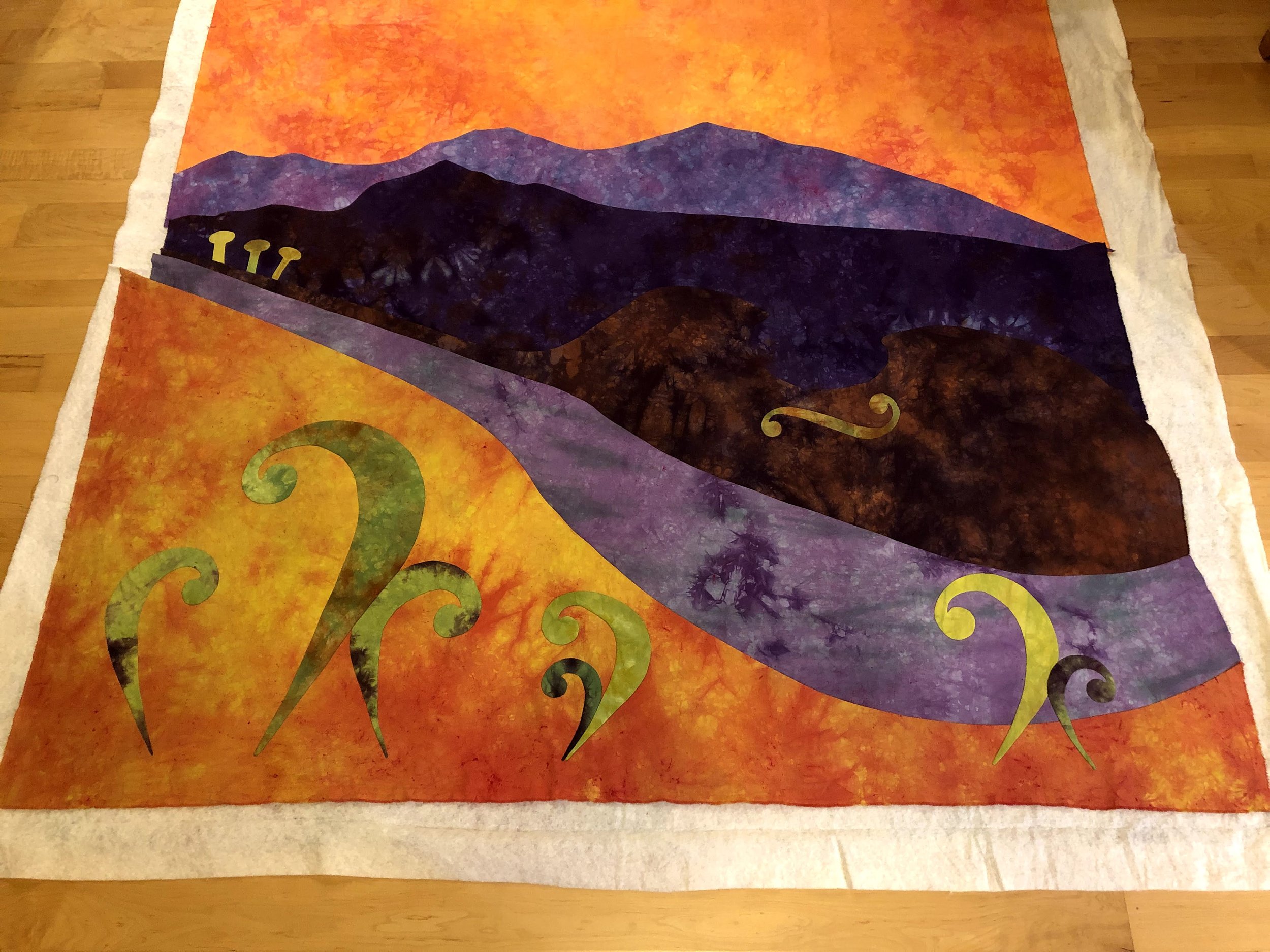Sopris Rhythms
Bringing a sketch to life is an adventure. Some projects are straightforward and I can see the destination in my head from the start. Other projects are less defined and shy about telling me what they want to become. This quilt has confidently let me know how to proceed at each step of the way.
Enlarging a sketch to full size is tricky. Sometimes the details worked great using pencil, but I need to simplify for the final fabric quilt. Other times what looks sleek and clean in the sketch looks clunky and incomplete when enlarged. In this case, enlarging the sketch created the look I was aiming for. It was fun to see the quilt take shape as I cut each fabric to shape. The simple shapes allow the hand-dyed fabrics to glow.
I always enjoy the meditative process of applique. I keep a scrap of paper nearby to capture ideas and reminders as I work. It is also the perfect time to listen to an audiobook or podcast. And I am a better listener when hanging out with family or friends, if my hands are busy. I love the feel of hand-dyed Kona cotton. I love the hand-dyed colors of this specific project. While stitching I enjoyed thinking about:
Autumn (my favorite season)
My love of mountains (especially autumn hikes)
Climbing Mt. Sopris (my first “Fourteener”)
Family reunions (during which we always hike, including the aforementioned Sopris hike)
My love of acoustic folk music and the deep resonate rhythms of double bass
My cousin (who had a broken arm so didn’t quite summit Mt. Sopris the day I did, but has since. And who creates wonderful, rich double bass music)
All the while stitching my love into this quilt for my cousin.
When I spread out the quilt thinking the applique was done and the quilt top was complete, it felt unbalanced. So I pulled out all the hand-dyed greens and began auditioning them for more bass clef ferns. Once I decided how many, what sizes, and what colors, I auditioned placement options. Eventually, the top was complete.
Can you see my cousin’s double bass? How many bass clef can you find? Where are the double bass strings?
I had left extra sky fabric at the top so before I could machine quilt the top, I had to determine the optimal amount of sky. Auditioning binding fabric options helped clarify the sky. With these decisions settled it was time to sandwich and baste the layers together to keep everything smooth and stable during machine quilting.
Although some projects definitely need machine quilting and I now have a mid-arm sewing machine for this step, I am least confident in this step. So it always takes me some time to overcome my nervousness and start. During that time, I spread out the quilt, letting it tell me what quilting designs it wants. For this quilt I kept a photo nearby so I could look at the actual texture of the mountains, forests, fields, etc. Finally, I started quilting…..and had so much fun!!!! Leaves and ferns in the foreground field, strings on the neck of the bass/trail/river, rolling hills on the bass, jagged rocks and ravines on the mountains, and swirling wind in the sky.
Final details make all the difference: squaring, binding, and adding the hanging sleeve and label. And then the quilt is complete! Ready for a photo session before packing and shipping to its new home. Today’s overcast lighting was perfect for the photo shoot! Soon “Sopris Rhythms” will be on its way to my cousin.














